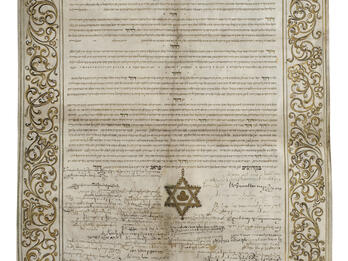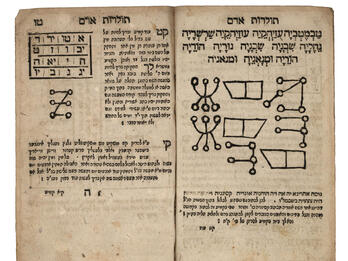Question to Moses Ḥagiz
I ask your Honor to do me the favor of making known to me your opinion as to how one should nowadays understand the degree of sanctity of the Holy Land; and if there is any merit in living there, for according to what I have understood from some scholars, this city of Jerusalem is presently like all the other lands, in that wherever we call upon God, He is bound to answer us as though it were in the Holy Land, as is attested by the text that states this: In every place where you mention My name, I shall come to you and bless you (Exodus 20:24). I was also told that its inhabitants transgress the commandment of God, Who decreed that this same land should be desolate, devoid of dwellers from among His children of Israel. And since this is the will of God, it seems that those who dwell therein are insolent and deserve to be punished rather than be given the constant assistance which you provide them along with so many Siluchim [shilukhim; those sent to collect money for the inhabitants of the Holy Land].
At the same time, I implore you to do me the favor of informing me as to the reason for such hardships! and deprivation which these said Siluchim generally portray to us with their letters, which are the source for this, and what if such hardships are true? Why don’t they leave that land, and how is it that the great quantity of money that we send them from these lands is insufficient to support them, for it comes to them from all over the world through the Siluchim. For it shall entirely serve, as is customary, to pardon my affrontery, making me capable of seeing the truth, having everything in writing to disabuse me of my erroneous notions; and may your memory assist me well in serving the Lord, for this alone is my intention and from its fulfillment, your Honor shall be well remunerated. Amen.
Credits
Published in: The Posen Library of Jewish Culture and Civilization, vol. 5.




